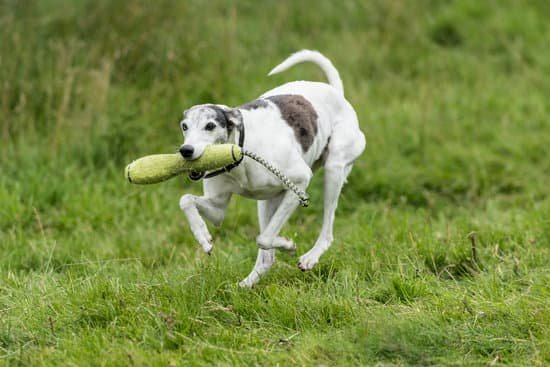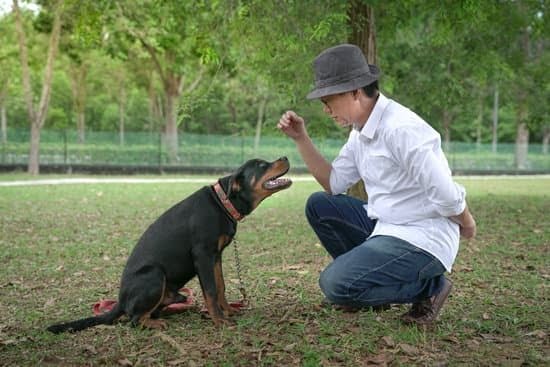Do you have a new furry friend at home and wondering how to learn train a dog? Understanding dog behavior is the key to successful training.
From their natural instincts to their behaviors, getting to know your dog on a deeper level will help you effectively communicate and train them. In this article, we will explore the various aspects of training a dog, from choosing the right training method to troubleshooting common issues, in order to establish a strong and positive relationship with your canine companion.
Before diving into the actual training process, it’s important to understand why dogs behave the way they do. By delving into their natural instincts and behaviors, we can gain insight into how they perceive the world around them and why certain training methods work effectively for them. This section will provide valuable information on what drives your dog’s actions and how you can use this knowledge to tailor your training approach to suit their needs.
Once you have a solid understanding of dog behavior, the next step is choosing the right training method. Positive reinforcement, clicker training, and other effective approaches will be explored in detail in this article. Each method has its own benefits and it’s essential to find one that aligns with your dog’s personality and learning style. By selecting the appropriate training method, you can set both yourself and your pup up for success in their training journey.
Choosing the Right Training Method
Understanding Positive Reinforcement
Positive reinforcement is a training method that involves rewarding your dog for exhibiting the desired behavior. This can be done through treats, toys, praise, or a combination of these rewards. The key is to create a positive association with the behavior, making it more likely that your dog will repeat it in the future. By focusing on rewarding the behaviors you want to see, you can effectively train your dog without resorting to punishment or negative reinforcement.
Exploring Clicker Training
Clicker training is a popular form of positive reinforcement that uses a small handheld device called a clicker. The clicker makes a distinct sound that signals to your dog when they have performed the correct behavior. It allows for precise timing and clarity in communication with your pet. Clicker training can be highly effective for teaching new commands and behaviors, as well as for shaping more complex skills and tricks.
Considering Other Effective Approaches
In addition to positive reinforcement and clicker training, there are other effective methods for training your dog. These may include relationship-based training, where you focus on building trust and connection with your pet, as well as marker training which uses verbal cues or other markers to signal desired actions from your dog.
Each method has its own strengths and may be more suitable for certain dogs depending on their individual characteristics and learning style. It’s important to consider various approaches and find the one that best suits both you and your dog’s needs for successful training outcomes.
Basic Obedience Training
Start With Sit
One of the first commands you will want to teach your dog is “sit.” This command is relatively easy for most dogs to learn and can be a great way to establish a foundation for other commands. Start by holding a treat close to your dog’s nose and then slowly raising it above their head.
As their head follows the treat, their bottom should naturally lower into a sitting position. Once they are sitting, give them the treat and plenty of praise.
Mastering Stay
The next important command to teach your dog is “stay.” This command can be vital for keeping your dog safe in various situations. Begin by having your dog sit, then show them the palm of your hand and say “stay” while taking a step back. If they stay in place, reward them with a treat and praise. If they get up, simply return them to their original position and try again.
Come When Called
Teaching your dog to come when called is an essential command for their safety and your peace of mind. To start, attach a long leash to your dog’s collar and let them wander a short distance away from you. Call their name followed by “come,” gently pulling on the leash if necessary. When they come to you, reward them with treats and praise.
These basic obedience commands are fundamental for establishing good communication between you and your dog. With patience, consistency, and positive reinforcement, your furry friend will soon become a well-behaved member of the family.
Socialization and Desensitization
When it comes to socialization and desensitization, it is important to help your dog become comfortable around different people, animals, and environments. This process is crucial in ensuring that your dog is well-adjusted and able to interact positively with the world around them. Here are some tips for effectively socializing and desensitizing your dog:
- Exposure to different environments: Introduce your dog to various settings such as parks, busy streets, and even quiet areas to help them feel at ease in different surroundings.
- Interaction with other dogs and animals: Arrange playdates with other dogs or gradually expose your dog to other friendly animals to promote positive social interactions.
- Meeting new people: Encourage positive encounters with different people by exposing your dog to friends, family members, and strangers in a controlled and non-threatening environment.
Proper socialization helps prevent fear-based behavior and aggression towards unfamiliar situations. Desensitization aims to reduce fear or anxiety towards specific triggers. This can be achieved through gradual exposure while using positive reinforcement techniques:
- Identify triggers: Determine what causes fear or anxiety in your dog, whether it’s loud noises, certain objects, or specific types of people.
- Gradual exposure: Introduce the trigger in a controlled environment at a low intensity, gradually increasing exposure as your dog becomes more comfortable.
- Positive reinforcement: Use treats and praise to create a positive association with the trigger, rewarding calm behavior when exposed.
By following these strategies for socialization and desensitization, you can help your dog develop confidence and resilience in various situations, ultimately leading to better behavior and a happier furry companion.
House Training
One of the first steps in house training your dog is establishing a routine. Dogs thrive on routine, so feeding them at the same times each day and taking them outside at regular intervals will help them learn when they should go to the bathroom.
Be sure to take your dog outside first thing in the morning, after meals, after waking up from a nap, and before bedtime. Praise and reward your dog when they go to the bathroom outside to reinforce this behavior.
Accidents are bound to happen during the house training process, but it’s important not to scold or punish your dog for these accidents. Instead, clean up any messes promptly with an enzymatic cleaner to eliminate odors that might attract your dog back to the same spot. Stay consistent with the routine and continue offering positive reinforcement when your dog goes to the bathroom outside.
In addition to establishing a routine, crate training can also be beneficial for house training. When used properly, a crate can serve as a safe space for your dog and help prevent accidents inside the home by limiting their access to certain areas during unsupervised periods. With patience and perseverance, you can effectively house train your dog and reduce accidents in the home.
Leash Training
When beginning leash training, it’s important to start in a low-distraction environment such as your backyard or a quiet street. Use a well-fitting harness or collar and a standard leash (avoid retractable leashes for training purposes).
Start by getting your dog used to wearing the collar or harness and let them explore the feeling of the leash without any tension. Once they are comfortable, begin walking with your dog on a loose leash, rewarding them for staying by your side.
As you progress with leash training, it’s crucial to encourage good behavior using positive reinforcement. This means rewarding your dog for walking nicely on the leash by offering treats, praise, or their favorite toy. If they start pulling or veering off track, simply stop walking until they relax and return to your side. Consistency is key in reinforcing the desired behavior and correcting any negative habits.
Remember that every dog is unique, so it’s important to be patient and understanding throughout the process of leash training. It may take time for some dogs to learn how to walk politely on a leash, but with dedication and consistent training, you’ll soon be able to enjoy peaceful walks together.
Advanced Training
Once your dog has mastered basic obedience training, it’s time to introduce more complex commands and tricks to provide mental stimulation and challenge their intelligence. Dogs thrive on learning new things and enjoy the mental exercise that comes from mastering advanced training. One popular command to teach is “roll over,” where the dog flips over onto its back, a fun trick that can impress friends and family.
Another advanced command is “take a bow,” where the dog lowers its front end while keeping its rear end up, resembling a bow. This not only entertains people but also strengthens the dog’s core muscles and flexibility. Adding complexity to your dog’s training routine can help prevent boredom and keep them engaged, which ultimately strengthens the bond between you and your pet.
In addition to commands, you can also teach your dog more complex tricks such as fetching specific items by name or even playing interactive games like hide-and-seek with toys or treats. These activities are not only entertaining for your canine companion but also promote problem-solving skills, creativity, and mental agility.
| Advanced Commands | Benefits |
|---|---|
| Roll over | Provides mental stimulation |
| Take a bow | Strengthens core muscles and flexibility |
| Name-specific fetching | Promotes problem-solving skills |
Troubleshooting Common Training Issues
When it comes to dog training, there are common behavioral issues that may arise, including barking, aggression, and separation anxiety. Understanding the underlying reasons for these behaviors is crucial in addressing them effectively. For example, excessive barking can be a sign of boredom, attention-seeking, or anxiety. On the other hand, aggression can stem from fear, territorial instincts, or lack of socialization. Separation anxiety often occurs when dogs become distressed when left alone due to their attachment to their owners.
To address barking issues, it’s important to first determine the cause of the behavior. Is your dog barking out of fear or to seek attention? Once you understand the root cause, you can work on providing mental stimulation and appropriate outlets for energy through interactive toys and regular exercise. Additionally, teaching your dog the “quiet” command combined with positive reinforcement can help reduce excessive barking.
Aggressive behavior in dogs should be handled with caution and professional help may be necessary in severe cases. It’s essential to identify triggers and eliminate potential sources of stress while gradually exposing your dog to controlled situations that may trigger aggression. Positive reinforcement plays a significant role in desensitizing aggressive behaviors by rewarding calm and non-aggressive responses.
Separation anxiety can be managed by gradually acclimating your dog to being alone through short absences followed by positive reinforcement upon your return. Creating a comfortable environment with cozy bedding and soothing music or white noise can also help alleviate anxiety when you’re away.
It’s important not to punish anxious behaviors but instead focus on creating positive associations with alone time through treats and interactive toys. Consistency is key in addressing all these common training issues for long-term success.
| Common Training Issue | Effective Solutions |
|---|---|
| Barking | Understanding root cause and providing mental stimulation |
| Aggression | Identifying triggers, gradual exposure, and positive reinforcement |
| Separation Anxiety | Gradual acclimation to being alone, creating positive associations with alone time |
Maintenance and Consistency
In conclusion, learning how to train a dog is a rewarding and fulfilling experience that can lead to a strong bond between you and your pet. By understanding the natural instincts and behaviors of dogs, choosing the right training method, and implementing basic obedience training, socialization, and desensitization, you are laying the foundation for a well-behaved and happy canine companion.
Additionally, house training and leash training are crucial elements in helping your dog become a well-mannered member of your household.
As you progress with your dog’s training journey, it’s important to remember the significance of advanced training to mentally stimulate your pet and troubleshoot common issues such as barking, aggression, or separation anxiety. These aspects will contribute to your dog’s overall well-being and happiness.
Moreover, consistency and maintenance play key roles in the long-term success of your dog’s training. Ongoing reinforcement will ensure that your furry friend retains what they have learned while developing good habits for the future.
In summary, learning how to train a dog requires commitment, patience, and dedication. Remember that every dog is unique and may respond differently to various training methods – what works for one may not work for another. With time and effort on both parts (yours and your pet’s), you can achieve great results in building a strong relationship based on trust and communication with your furry companion.
Frequently Asked Questions
What Are the 5 Golden Rules of Dog Training?
The 5 Golden Rules of Dog Training are: be consistent, be patient, use positive reinforcement, set realistic goals, and maintain a calm and assertive demeanor. Consistency is important because it helps the dog understand what is expected of them. Patience is essential as dogs may not learn right away.
Positive reinforcement, like treats or praise, can make the learning process more enjoyable for the dog. Setting realistic goals helps both you and your dog stay focused on achievable outcomes. Lastly, maintaining a calm and assertive demeanor helps create a sense of leadership for your dog.
How Do I Start Training My Dog?
To start training your dog, it’s important to establish yourself as the leader in a gentle but firm manner. This involves setting boundaries and rules for behavior while also providing affection and recognition for good behavior. Begin with simple commands like “sit” or “stay” before progressing to more complex tasks.
Using positive reinforcement such as treats and praise can help motivate your pup. Consistency and patience are key during the training process.
Can I Train My Dog Myself?
Yes, you can train your dog yourself with proper knowledge, commitment, and patience. Training your own dog allows you to develop a strong bond with them while teaching essential behaviors that will make them well-behaved companions.
It’s important to educate yourself on various training techniques and understand your specific breed’s temperament and needs before starting the training process. Additionally, seeking guidance from professional trainers or taking obedience classes can provide valuable support along the way if needed.

Welcome to the blog! I am a professional dog trainer and have been working with dogs for many years. In this blog, I will be discussing various topics related to dog training, including tips, tricks, and advice. I hope you find this information helpful and informative. Thanks for reading!





